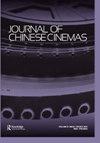Dirty fashion: Ma Ke's fashion ‘Useless’, Jia Zhangke's documentary Useless and cognitive mapping
IF 0.4
3区 艺术学
0 FILM, RADIO, TELEVISION
引用次数: 2
Abstract
This article is part of my project that engages with visual and media cultures – fashion, cinema and documentary – to address Chinese consumer culture in the socialist and post-socialist periods. Focusing on haute couture, consumption and memory, the first part introduces an aspiring fashion designer, Ma Ke, and her latest fashion line, ‘Wuyong’/‘Useless’ (2007). Ma Ke intends to draw attention to the loss of the emotional bond between the maker and the user of clothes in the age of industrialized mass production and consumption. To help fashion recover this lost memory, Ma Ke buries her garment under dirt for a period of time. When the garment is unearthed, she reasons, it will find itself imbued with the imprint of the time and space of the soil. Presented at the Paris Fashion Week in February 2007, Ma Ke's haute couture exhibit ‘Useless’ was intended to be a critique of modern consumer culture. The second part engages with Jia Zhangke's documentary Wuyong/Useless (2007), a trans-media dialogue with Ma Ke's fashion design ‘Useless’. I argue that Jia Zhangke's engagement with Ma Ke's fashion is double-edged: although the director embraces some parts of ‘Useless’, he critiques other parts of her design. In particular, I show how the director introduces a new level of complexity to the artist's anti-fashion and anti-consumption gesture through the use of montage. The last part suggests that Jia Zhangke's documentary can be regarded as an exercise in what Fredric Jameson calls ‘cognitive mapping’, which attempts to capture the complexly mediated relationships between cultural representational form (e.g. fashion and documentary) and social totality within the context of global capitalism.肮脏的时尚:马可的时尚《无用》、贾樟柯的纪录片《无用》与认知映射
这篇文章是我的项目的一部分,涉及视觉和媒体文化——时尚、电影和纪录片——来探讨社会主义和后社会主义时期的中国消费文化。第一部分以高级时装、消费和记忆为主题,介绍了一位有抱负的时装设计师马可和她最新的时装品牌“无用”(2007)。马可想让人们注意到,在工业化大规模生产和消费的时代,服装制造者和使用者之间失去了情感纽带。为了帮助时尚界找回失去的记忆,马可把她的衣服埋在泥土下一段时间。她推断,当这件衣服被挖掘出来时,它会发现自己浸透了土壤的时间和空间印记。在2007年2月的巴黎时装周上,马可的高级定制展览“无用”旨在对现代消费文化进行批判。第二部分是贾樟柯的纪录片《无庸/无用》(2007),这是与马可的服装设计作品《无用》的跨媒体对话。我认为贾樟柯与马可的时尚接触是一把双刃剑:尽管导演接受了《无用》的某些部分,但他批评了她设计的其他部分。特别是,我展示了导演如何通过使用蒙太奇将艺术家的反时尚和反消费姿态引入了一个新的复杂水平。最后一部分表明,贾樟柯的纪录片可以被视为弗雷德里克·詹姆森所说的“认知映射”的一种练习,它试图捕捉全球资本主义背景下文化表征形式(例如时尚和纪录片)与社会整体之间复杂的中介关系。
本文章由计算机程序翻译,如有差异,请以英文原文为准。
求助全文
约1分钟内获得全文
求助全文

 求助内容:
求助内容: 应助结果提醒方式:
应助结果提醒方式:


